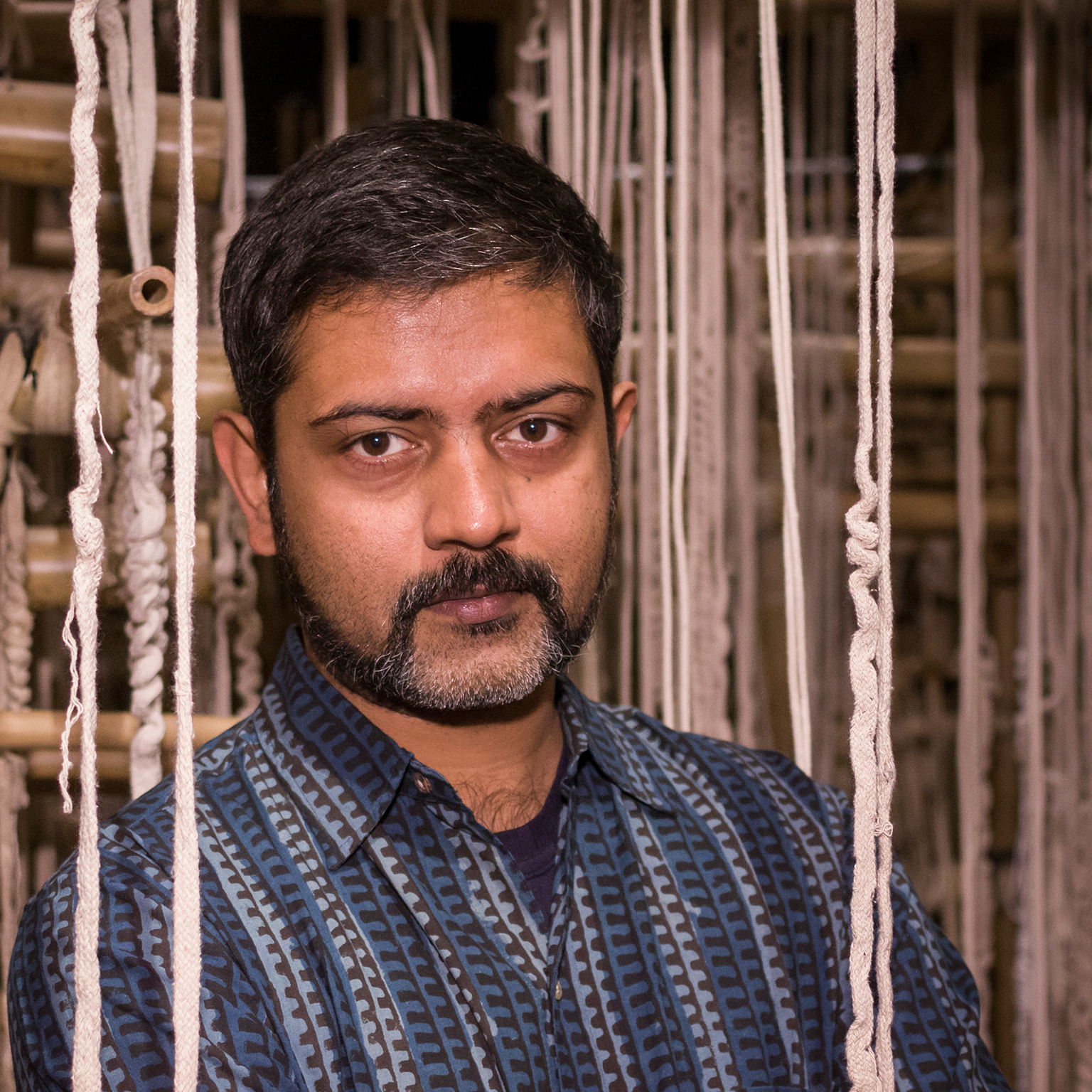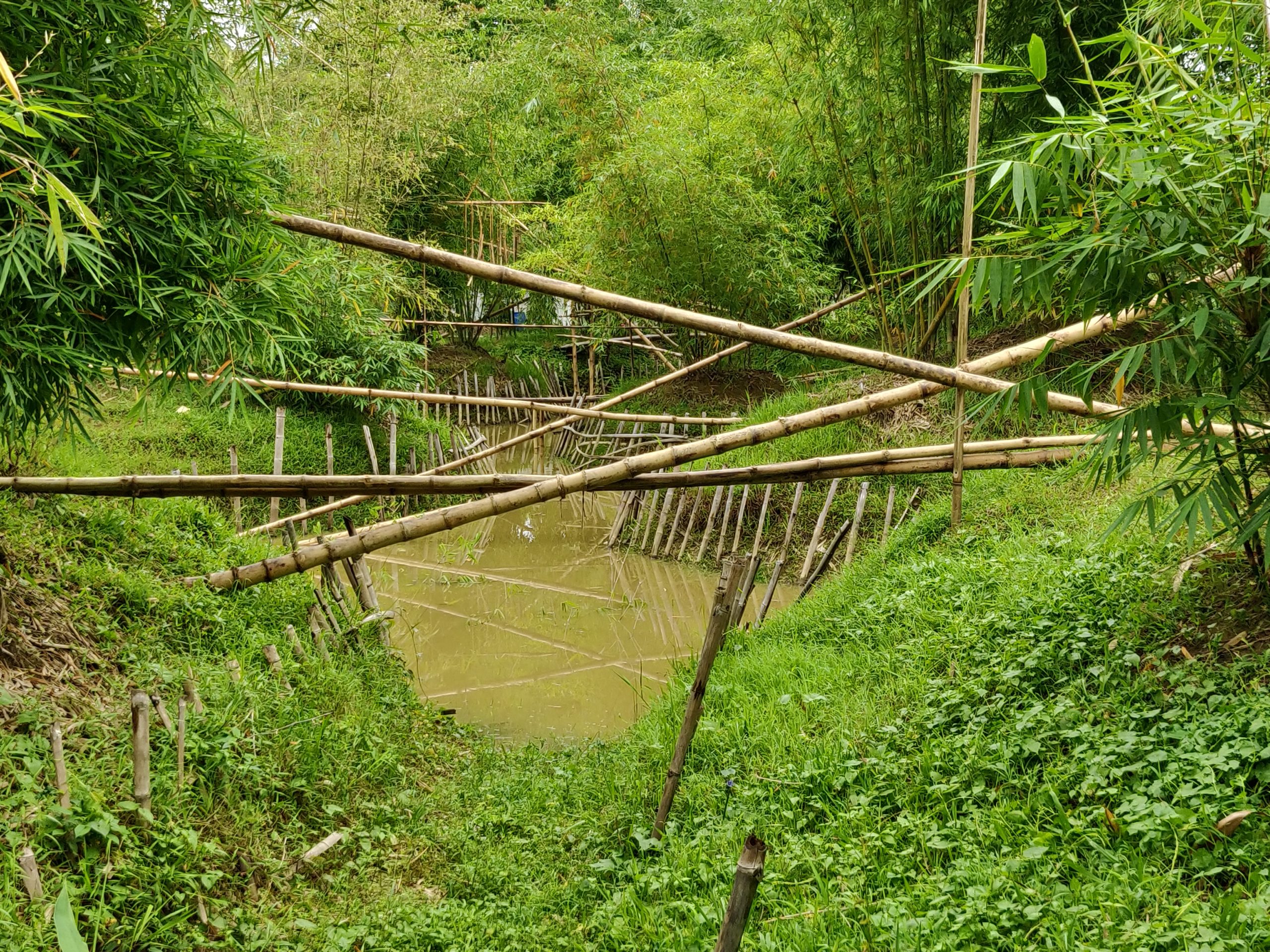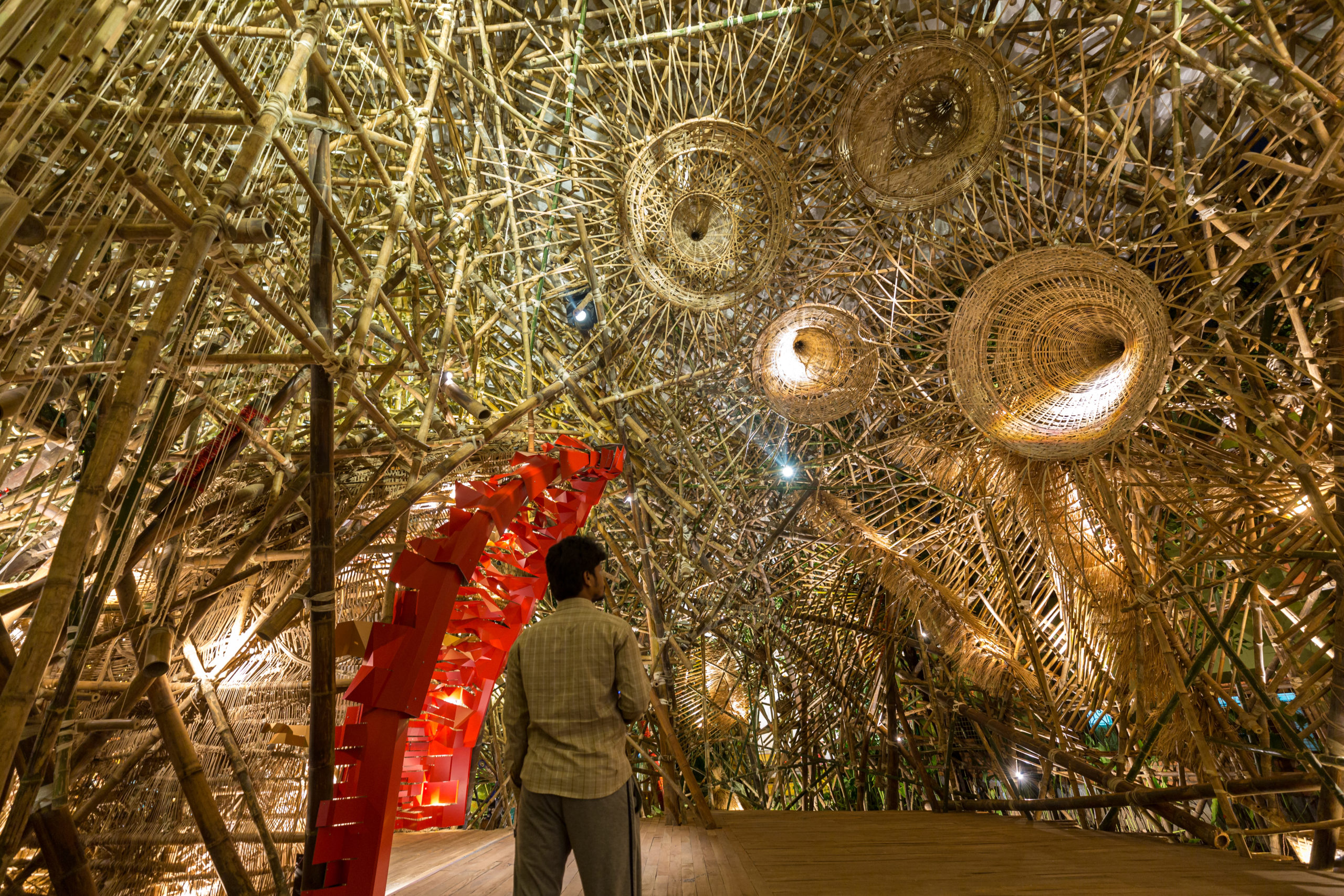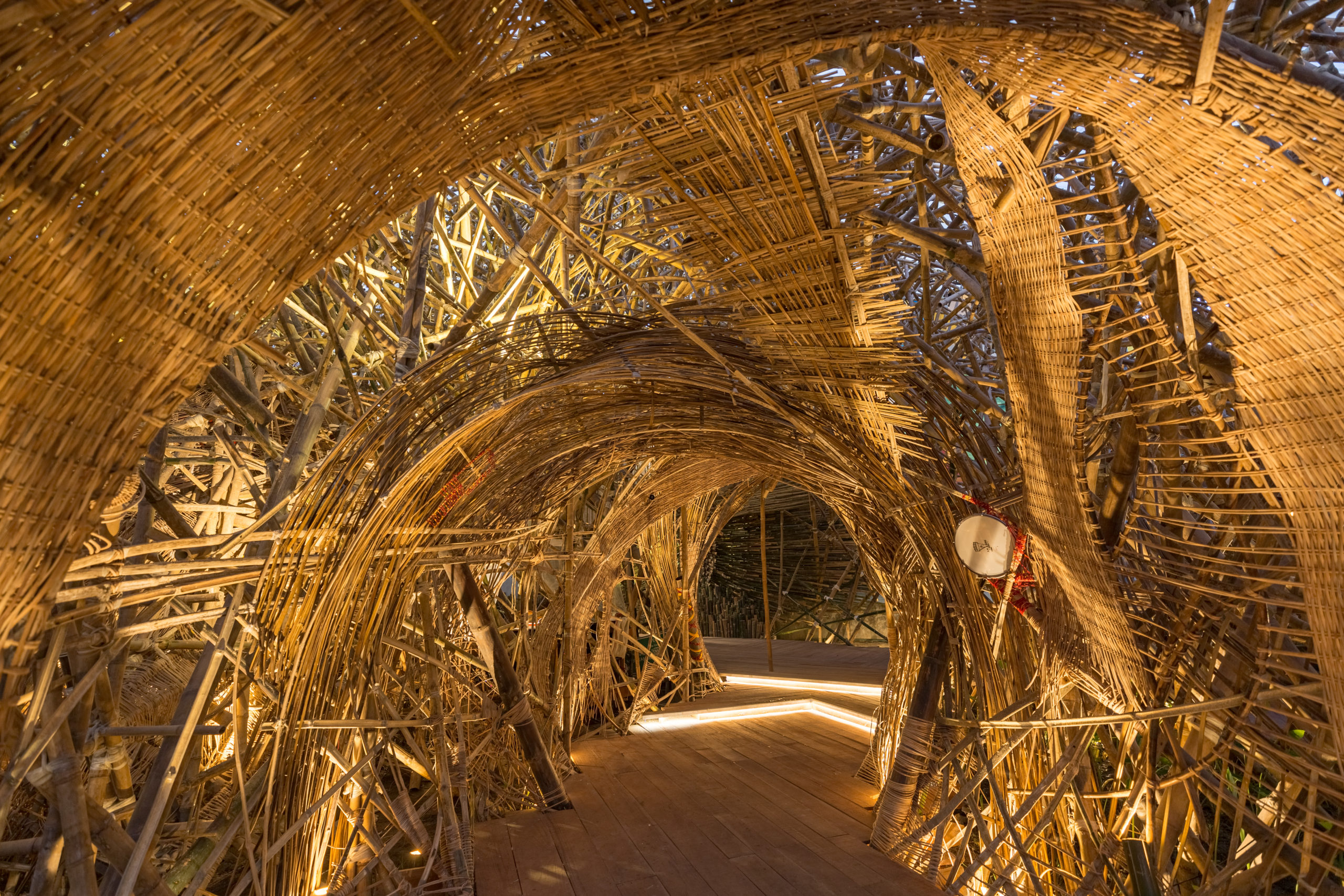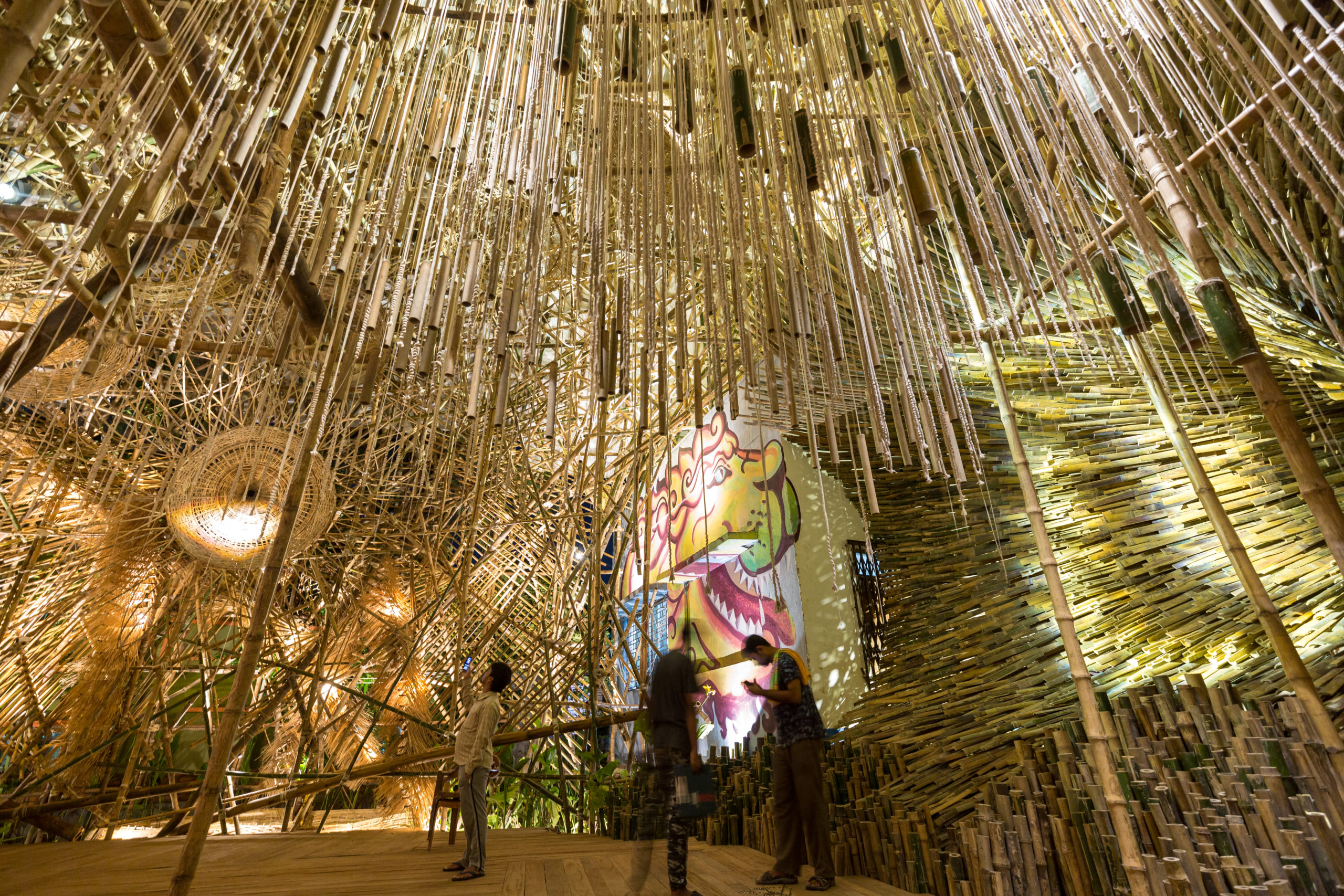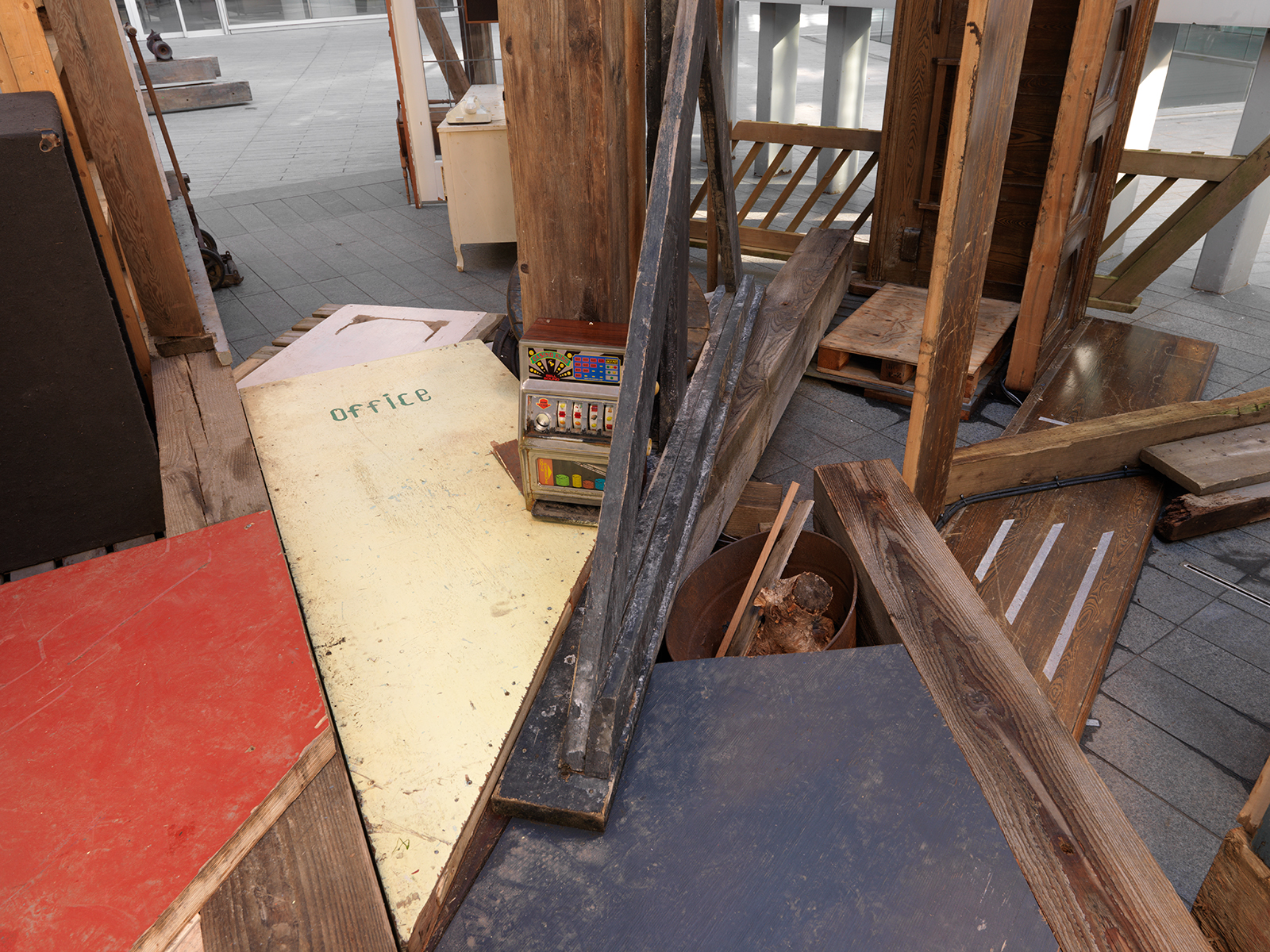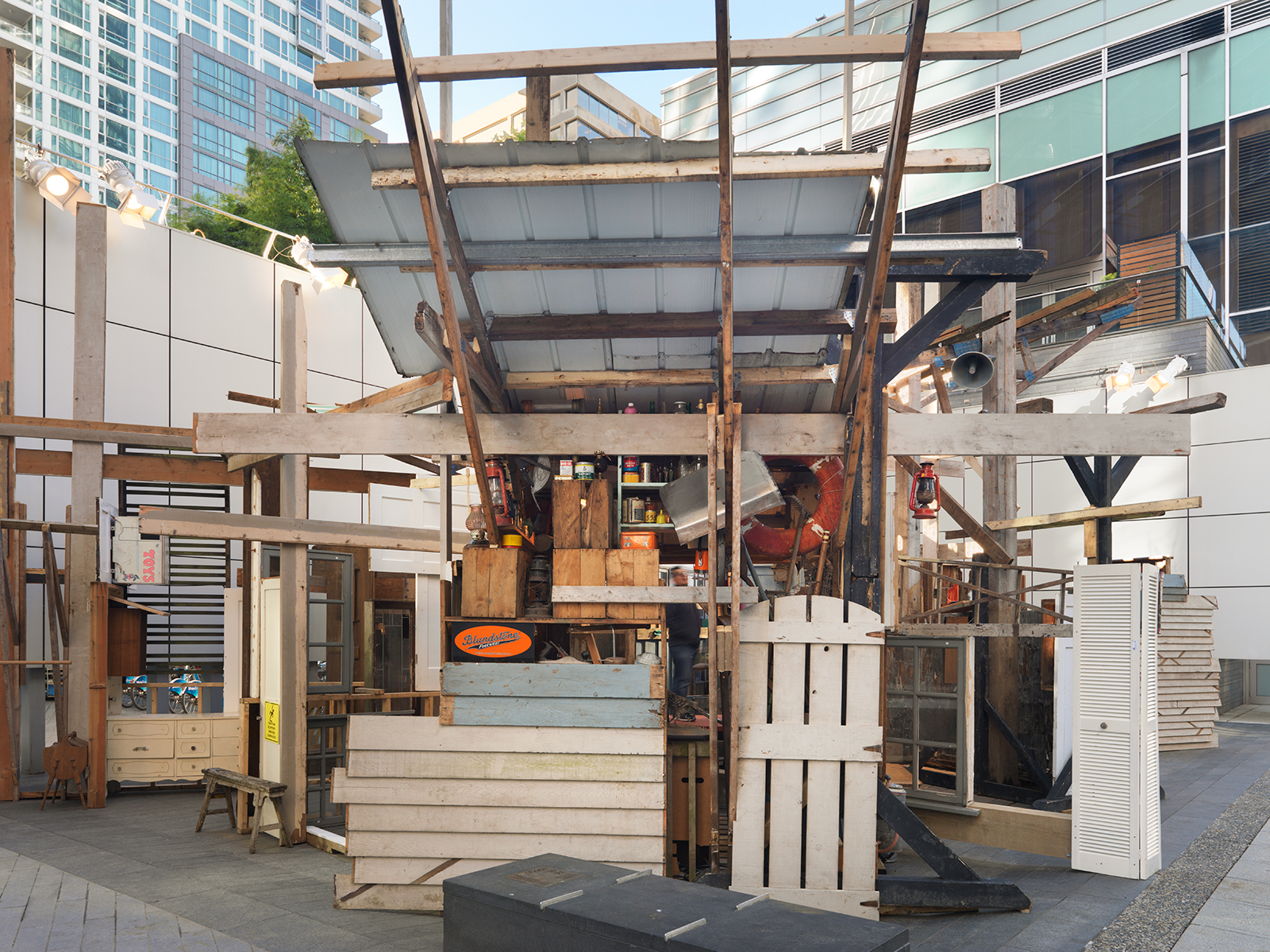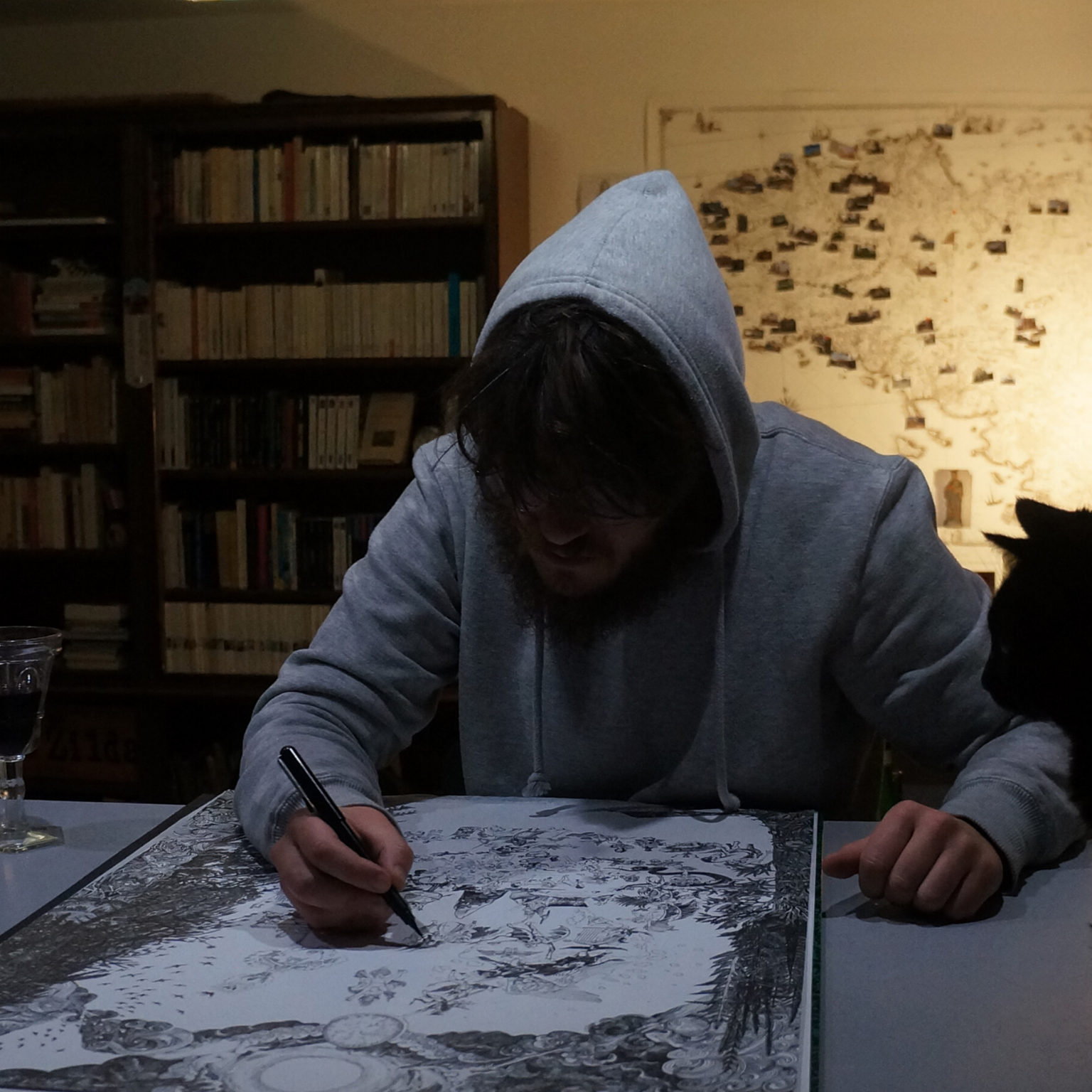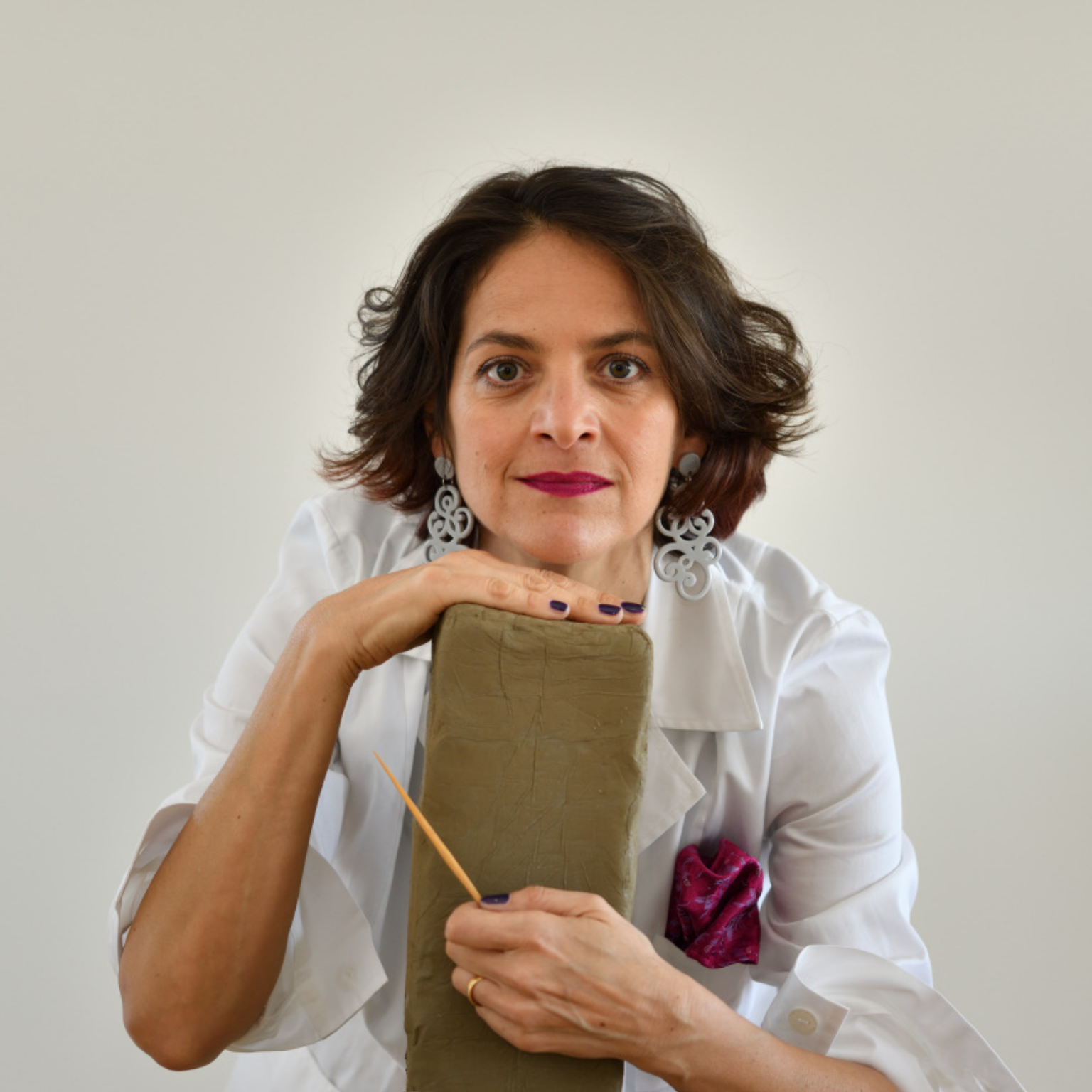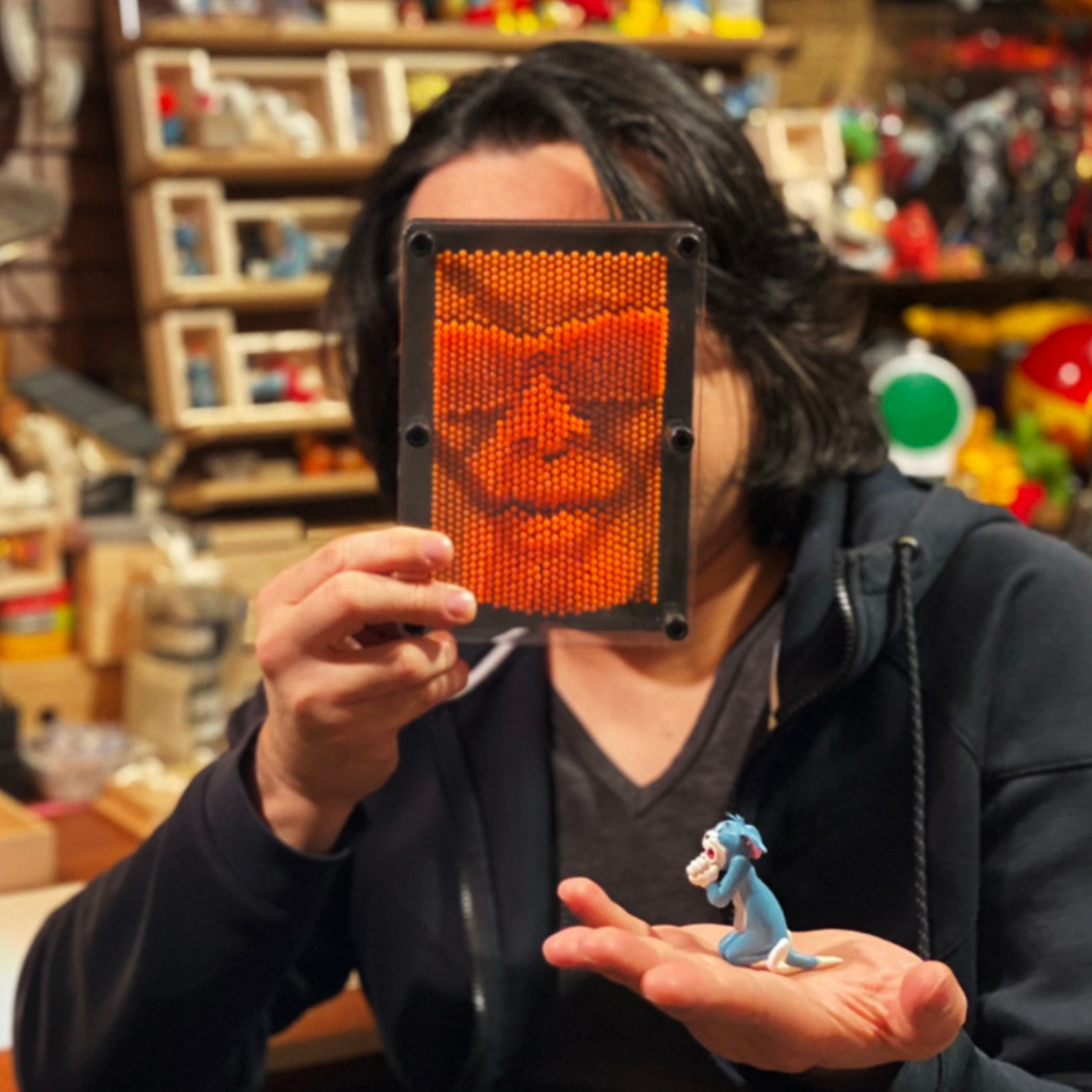Asim Waqif, installation artist from India. Photo © MFA Boston
1.Tell us what you do and your beginnings.
I am an installation artist working on large scale public-art projects. Initially I studied architecture and worked in set-design and exhibition design while also dabbling in documentry films. In 2005 I chanced upon the art scene and did a few art projects while continuing to work as a designer. By 2010 I had almost completely shifted to art and many opportunities opened up for me.
2.What does your work aim to say?
My work deals with issues of sustainability, waste and the built environment. It is my perverse intention to reconfigure trash such that it becomes so desirable that people want to put it in their drawing rooms and climate controlled art collections. Often people who can afford to buy art, those who are economically well up the ladder, are the people who have very large waste footprint.

My large public installations are made after laborious and intricate work with craftsmen and other technical collaborators, but the projects themselves are often temporary. Most of the material used for these projects is sold back into the secondary market at the end of the project to take on new forms.
For my project at Vancouver Art Gallery’s Offsite, all the materials were sourced for free from various stakeholders involved with waste management in the city. Many of the objects used in the installation were iconic British Columbia products manufactured over the last century that had been trashed.
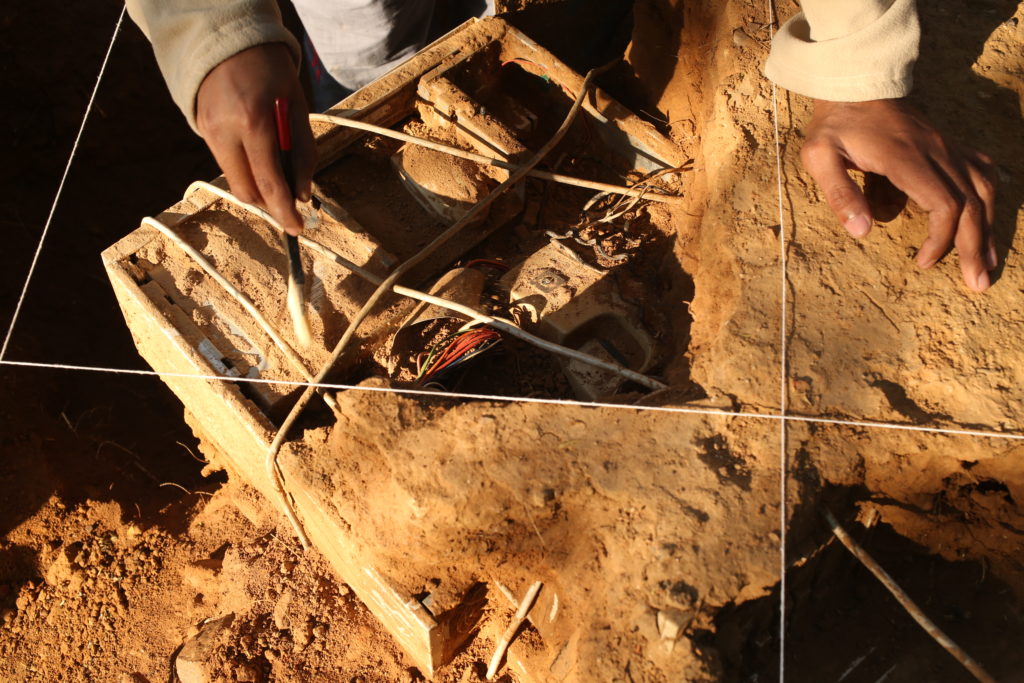
Most of these were stolen from the installation by city-folk and went back into people’s homes as novelty souvenirs. At the end of the exhibition, a large part of the old-growth timber was used to make an extension of a house by the project architect. A net zero-waste art project.
3.Where do you find inspiration for your art?
I am inspired by situations and contexts. I rarely look at other artist’s work or exhibitions. Rather I want to explore people and their environment. I am interested in an amalgamation of seemingly opposing ideas and techniques such that the viewer is not able to typecast their experience: vernacular with robotics, natural with built environment, decay with durability.
4.Could you give us some insight into your creative process?
My projects are based on intense research on local context of the site. I tend towards personal and anecdotal information rather than statistical data, since I feel statics can be manipulated to fit any viewpoint. I am interested in personal experience and emotions not just logistical information.
I am interested in developing a collaborative partnership with local fabrication teams. I want to decentralise the creative process such that each team member is able to contribute ideas. I look at myself as a director or conductor of an orchestra who creates conducive situations for specific processes that I am interested in.
This allows the project to evolve way beyond my individual capacity as the creator. I rarely make drawings and visualisations of what I am trying to make, rather letting the process of fabrication arrive at a form organically.
5.What are your future projects?
Since the pandemic many of my large scale interactive projects have been put on hold. Now as things open up slowly, I am looking forward to taking some of these ideas forward. I have an ongoing solo exhibition at Gallery Nature Morte (Delhi). I also plan to do an exhibition in Brasilia with Gallery Karla Osorio in the coming year.
I am also working on a 20 year project in Sylhet, Bangladesh with the Samdani Art Foundation. Right now we are in the 5th year. Here I have created a large bamboo plantation of 13 different species on 2 acres of land. This bamboo is being manipulated into different forms as it grows, creating a living and growing sculpture. For this we first did top soil management and tried to improve the fertility of the soil with mulching and natural fertilisation.
Since the land tended to get waterlogged, we dug a lake to hold this water and used the soil to create mounds for planting the bamboo, which likes to be close to the water but not submerged by it. In this lake we have introduced different kinds of fish. Frogs, birds and other small animals have come on their own. We have also planted other flora that grows well with bamboo.
Now we are working on different aeolian instruments, so that the weather condition changes the soundscape around site. Recently I started working with the cyanotype process. I want to explore this medium further in the coming months.
Interview by Fabio Pariante, journalist / Twitter – Instagram
MORE
Asim Waqif on social networks: Instagram – Facebook – YouTube
Asim Waqif (Hyderabad, 1978) is an Indian artist and studied architecture at the School of Planning and Architecture in New Delhi and then worked as an art director for television shows. Before pursuing his current career as an artist, Waqif also spent a period in the production of independent documentaries and films.
His art is centered on themes that promote sustainability, ecology and the environment, and the technique consists of combining traditional craft techniques with new technologies, such as robotics and electronics through upcycling or creative reuse. The artist won the Rockefeller Foundation Bellagio Awards in Italy in 2018, and the Emerging Artist Award New Delhi in India in 2016.
In March 2020, Artsy named Waqif one of 10 Indian artists who shape contemporary art and his first solo show in Europe was held at the Palais de Tokyo in Paris, in 2012, entitled Bordel Monstre or Monstrous Mess; made with the debris of previous exhibitions, he created an immersive installation. Asim Waqif is based in New Delhi.
